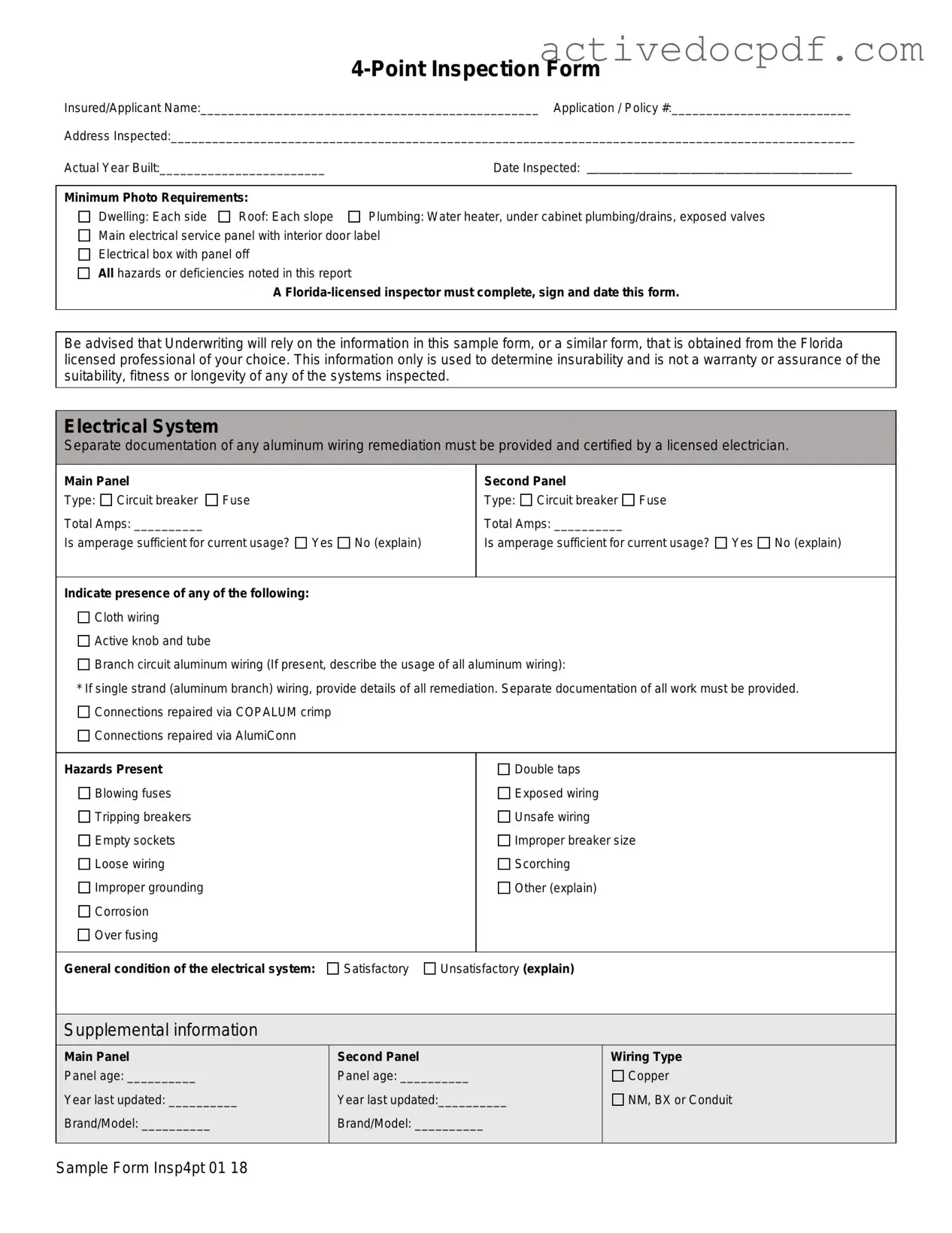Free 4 Point Inspection PDF Form
The 4-Point Inspection Form is a crucial document used primarily in Florida to assess the condition of a property's key systems: the roof, electrical, HVAC, and plumbing. This inspection helps insurers evaluate the insurability of a property by providing detailed information about its current state. Understanding this form can empower homeowners and potential buyers to make informed decisions regarding their insurance needs.
Edit Form Online
